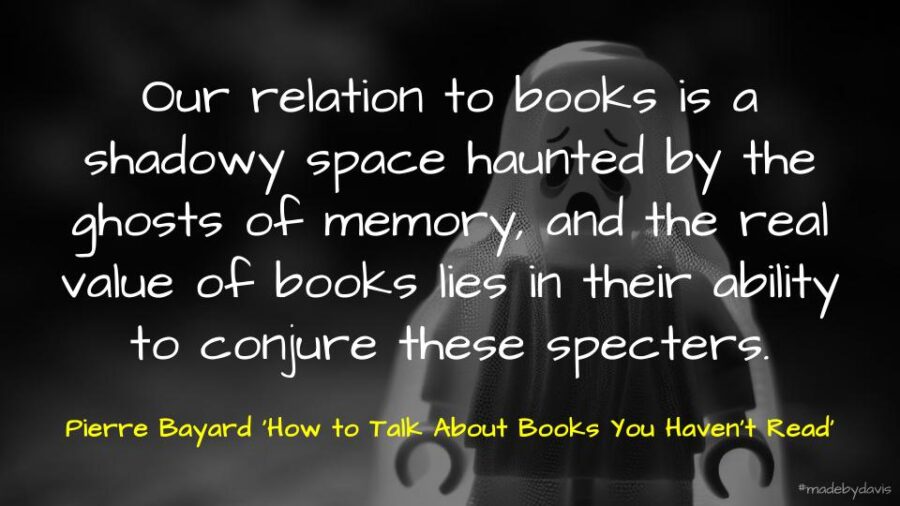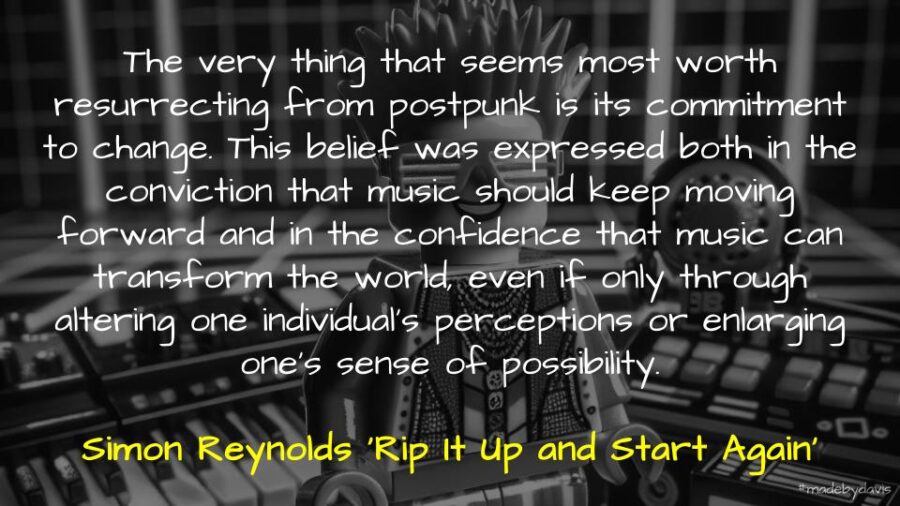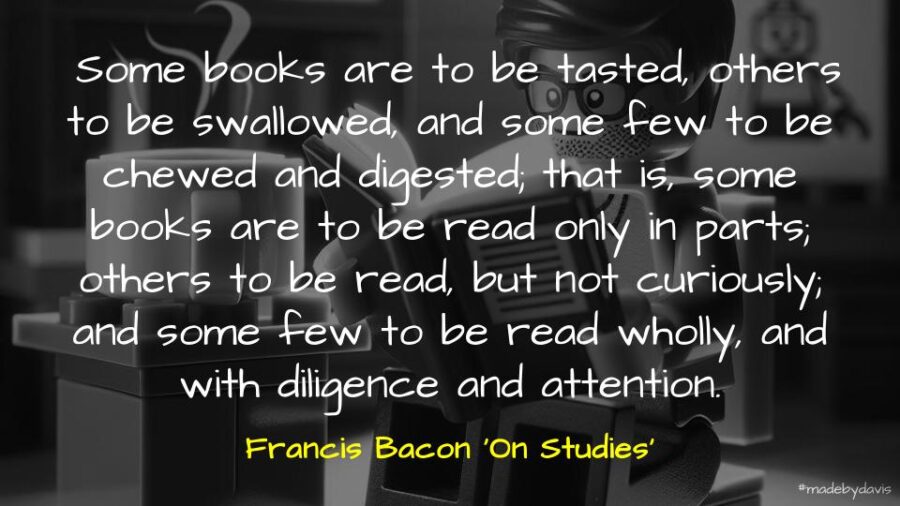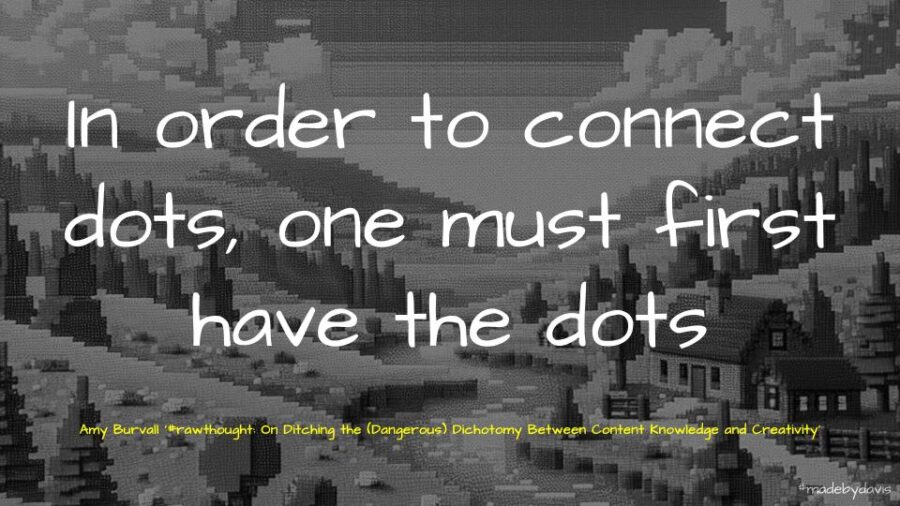With Mood Machine: The Rise of Spotify and the Cost of the Perfect Playlist, Liz Pelly unpacks Spotify’s primary goal, that being to hook users and reduce amount paid in association stream share. Instead of challenging capitalism on the back of the pirate culture, she explains how the platform is really an ultra-capitalist advertising company. Built on the back of learnings from torrent sites, the focus is on the illusion of frictionless. However, like the illusion of processed food, such magic ignores everything involved. Everything played by the user acts as a test, with the goal of the platform becoming the passive soundtrack to our lives, where the only competition is silence itself. This constant collection of data leads to the development of a ‘taste profile’, built around the idea of what you listen to and when. This simulacrum of ourselves risks taking a three-dimensional picture and flattening it into two dimensions. As a former machine learning engineer suggests:
“What do you want when you listen to music?” he continued. “I don’t think there’s a single answer. Some of the records that I would consider really life-changing, really profound, are records that in terms of listening time, they wouldn’t even show up in my top 100. Partially because they’re really challenging records. They’re records that opened me up to certain things. But they require a lot of investment. I’m not going to sit down and eat dinner to it. I need to be in a space where I can really devote myself. There is a lot of music that listeners find important but it’s not what you want to listen to all day.”
Ultimately, he determined that there was really only so much that could be gleaned from a bunch of information about someone’s listening history—from reducing a person’s music taste to a pool of data. “It’s like taking a three-dimensional picture and flattening it to two dimensions,” he told me. “It still has some relation to the actual object you’re trying to study, but it leaves out a fair amount. To say your tastes are really represented by a list of the things that you’ve listened to—almost anyone would say that’s not exclusively true. They’re correlated, certainly. But it’s decontextualized. Looking at a stream of all the tracks I’ve played, it tells you something.” But there is, of course, much that the data does not say.
Source: Mood Machine by Liz Pelly
For example, the focus on mood music and vibes that is a part of the two-dimensional vision is never really music that anyone knows and it does not create fans. While monetisation built around repeats moves artists away from more challenging ideas. It also leads to the development of cheaper standardised ‘perfect fit content’ where artists are legitimately paid to generate particular content – a concept similar to say a wedding artist – which Spotify then owns the masters for. One of the issues is that this all becomes centred around data about Spotify, rather than our music. Going beyond the town square, Pelly suggests that Spotify is best considered as another part of the social media shopping mall where you never quite know what is you and what is the algorithm.
In addition to corrupting the culture around music listening, Spotify pays labels and distros on percentage, rather than paying artists per play. This is further confounded by ‘Discovery Mode’ where artists can accept lower royalities in exchange for algorithmic promotion. This leads to the situation where independent artists are confronted with the question: “Is $0.0035 really better than nothing?” In case that was not bad enough, 86% of tracks with less than 1000 plays in the year are actually demonetised , while at the same time artists are being forced to do more and more.
“If retailers are going to take your vinyl album, it’s like, Well, what are you doing to tell people it’s on sale here? Are you doing street posters? It’s the same thing on digital services. It’s not just Ah yes, you’ve got a great record and we are going to support you. What’s the campaign? What’s the story? What can we expect? Have you got any festivals or TV appearances? All of these things feed into whether people support the music or not. I’d love to think it’s all about the music but it’s really not. Clearly having great music helps. But there’s actually a lot of great music out there.”
Source: Mood Machine by Liz Pelly
All in all, Spotify is akin to playing the slots where the house always wins.
For Pelly, the future involves rethinking profit motives and power structures. The fear is that with all the current constraints, we are losing music that will never be made.
if we keep giving too much power to corporations to shape our lives, and we don’t protect working musicians’ abilities to survive. We are foreclosing that possibility for music to evoke those ephemeral unknowns. We are losing a lot of music that will never be made. We are letting new expressions, emotional articulations, and points of connection slip away.
Source: Mood Machine by Liz Pelly
In the end, the challenge is bigger than music, it is about building the world that we want.
Mood Machine is a strange book. On the one hand, many of the ideas neither felt new or read is somehow obvious. For example, here are some links from my bookmarks collected over the years:
- Reflecting upon Spotify’s Wrapped, the yearly review, Kelly Pau reminds us of the place of algorithms and artificial intelligence embedded within these choices and recommendations, which often come with their own sets of biases and assumptions around gender and mood.
- Wondering about how much Spotify understands us, Meghan O’Gieblyn explains that there are limits to how much an application can know, such as your thoughts and beliefs, personal history, and the unspoken nuances of the relationships that have made you who you are.
- Discussing the collapse of genre and music loyalities, Jack Hamilton argues that Spotify’s main focus is time on app and the data it can collect from this.
- The Patent Drop newsletter explores a patent for mood-recommendations based on wearable data and what this actually means. For example, do you suggest songs that allow a user to revel in that mood, or do you suggest songs that try to shift a user’s mood.
- Unpacking the Discover Weekly feature, Sophia Ciocca discusses the three main types of recommendation models that Spotify employs: Collaborative Filtering models, Natural Language Processing (NLP) models, and Audio models.
- Widening the sources of data used to help profile users, Sarah Zhang discusses Spotify’s move to team up with AncestryDNA to provide richer results and the problems with this.
- Discussing the role of technology in our future as a part of her Boyer Lectures, Genevieve Bell argues that all companies now are first and foremost data companies, whether it be a music application, a supermarket or an airline.
Yet, I had never really joined all the pieces as Pelly does in such a concise manner in Mood Machine.
I was interested in Pelly’s exploration of the problems with how Spotify captures our data to build a profile and how this does not really capture all the ways we listen and consume. It is interesting to consider the way in which Spotify helps mold a ‘templated self’ or what David Marshall describes as a ‘dual strategic persona’. As Michel Faber captures in his book Listen, music and the act of listening is so much more than can be condensed down into a few data points.
Personally, I am always intrigued by both the suggestions for different playlists or end of year. I always wondered how this information was garnered, especially when it compiled such weird mixes as this combination of Fleetwood Mac, Nine Inch Nails, Supertramp, Bruce Springsteen, Tool and Neil Young:
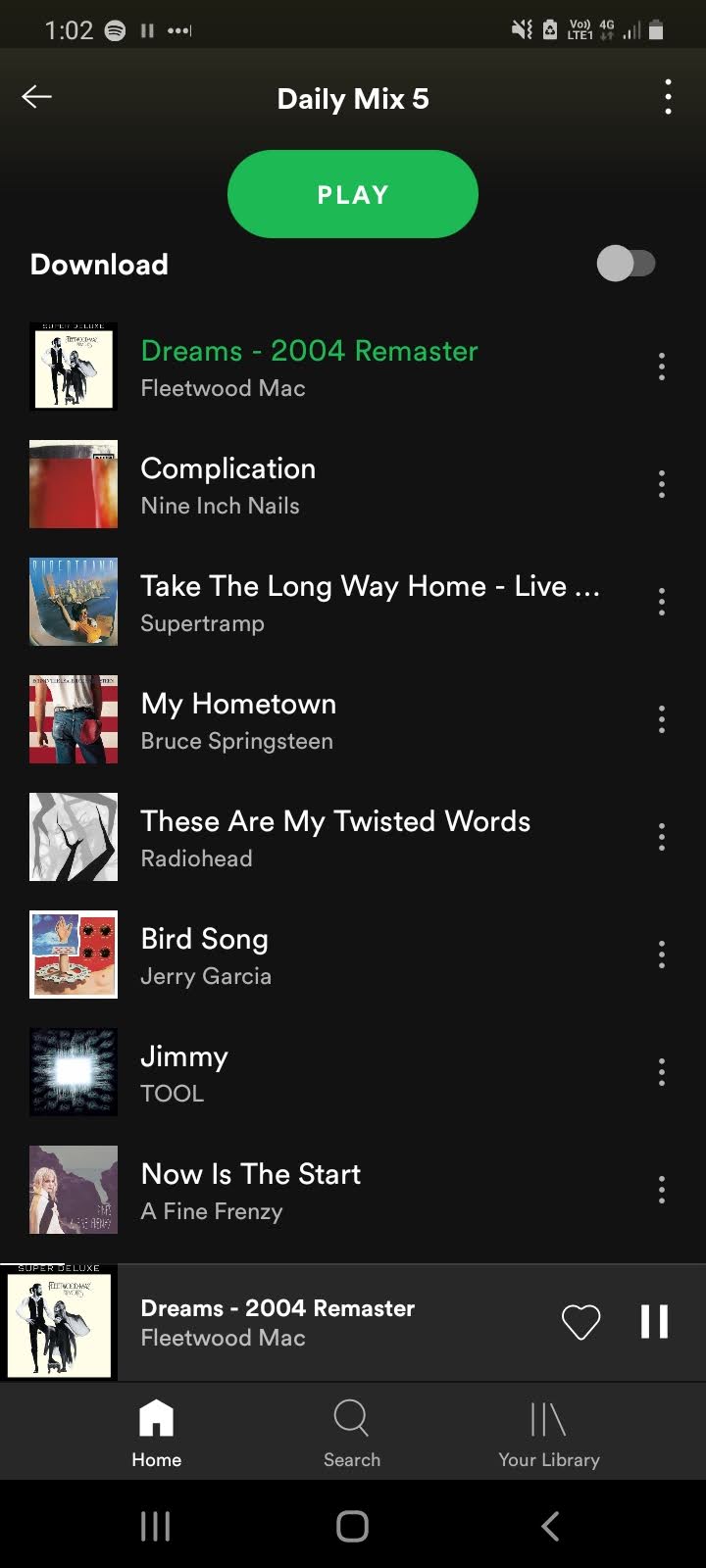
I knew that Spotify collected information around key and scale, but I was unaware of the other elements that fed the ‘taste profile’. (Ironically, I actually listened to the above playlist wondering if in fact it worked together. Sad to say, it did not. I wonder what Spotify took from that?)
Often I will read the name of an artist somewhere, not a mood or anything, and go and listen to a track or an album to find out more. This is not a ‘like’ or anything else, it is simply serendipitously perusing the shelves. The same can be said when I dive into some human playlists, from artists such as Fourtet, Caribou, Jamie XX, Aphex Twin, Worker & Parasite and Twinkle Digitz, or based on books and podcasts, such as Half Deaf, Completely Mad, Rip It Up and Start Again and Only the Shit You Love podcast. In addition to this, there are times when I play music for my children. Yet Spotify takes all this and somehow flattens it into the same sausage.
In the end, I feel that Mood Machine provides an account of the enshittification of Spotify. With this, I appreciate the push for different models, but fear that I am trapped in convenience, especially when I am within a family account where it is bigger than me. Here I am reminded of Cory Doctorow’s point about collective action:
Any time you encounter a shitty, outrageous racket that’s stable over long timescales, chances are you’re looking at a collective action problem. Certainly, that’s the underlying pathology that preserves the scholarly publishing scam, which is one of the most grotesque, wasteful, disgusting frauds in our modern world (and that’s saying something, because the field is crowded with many contenders).
Source: Pluralistic: MIT libraries are thriving without Elsevier (16 Aug 2024) by Cory Doctorow
Personally, I have turned to vinyl and Bandcamp for supporting artists and trying to step beyond my ‘taste profile’. However, I always find limits to this. However, maybe I need to accept that frictionless experience comes at a cost:
Resisting the algorithm is hard and often requires sifting through more noise yourself to find the signal, but it is doable with intention. It takes both knowing what you are looking for and being open to finding something totally not what you were expecting.
Source: Accepting friction: listening without a streaming subscription (Part 1) – Tracy Durnell’s Mind Garden by Tracy Durnell




